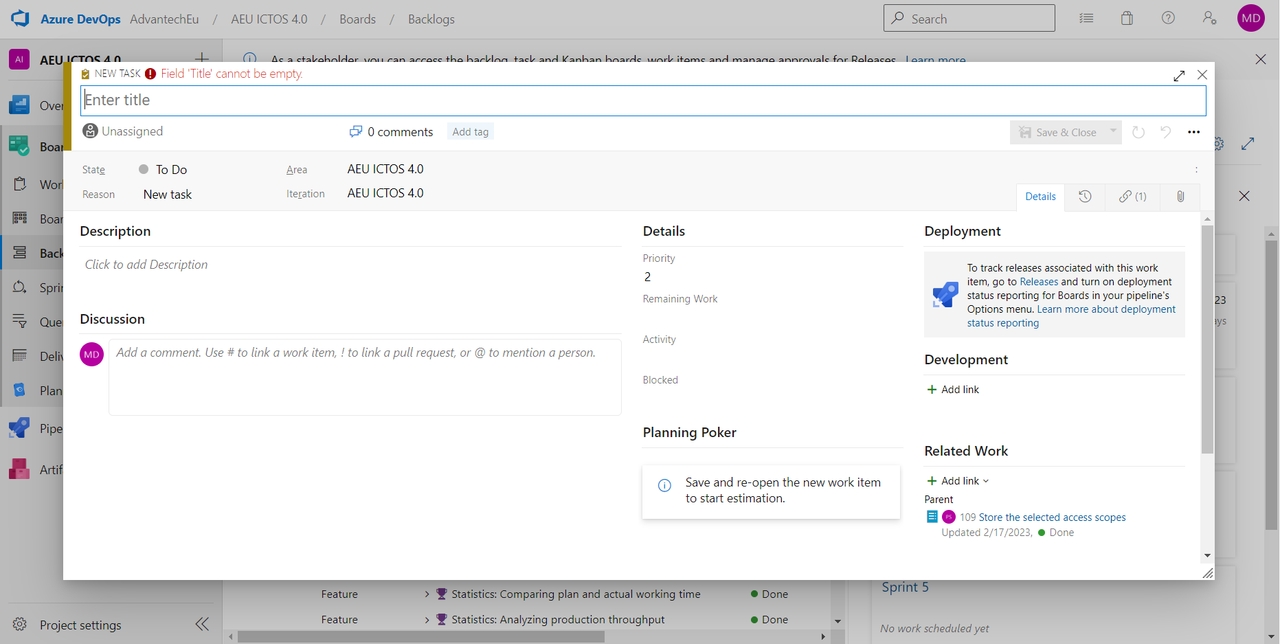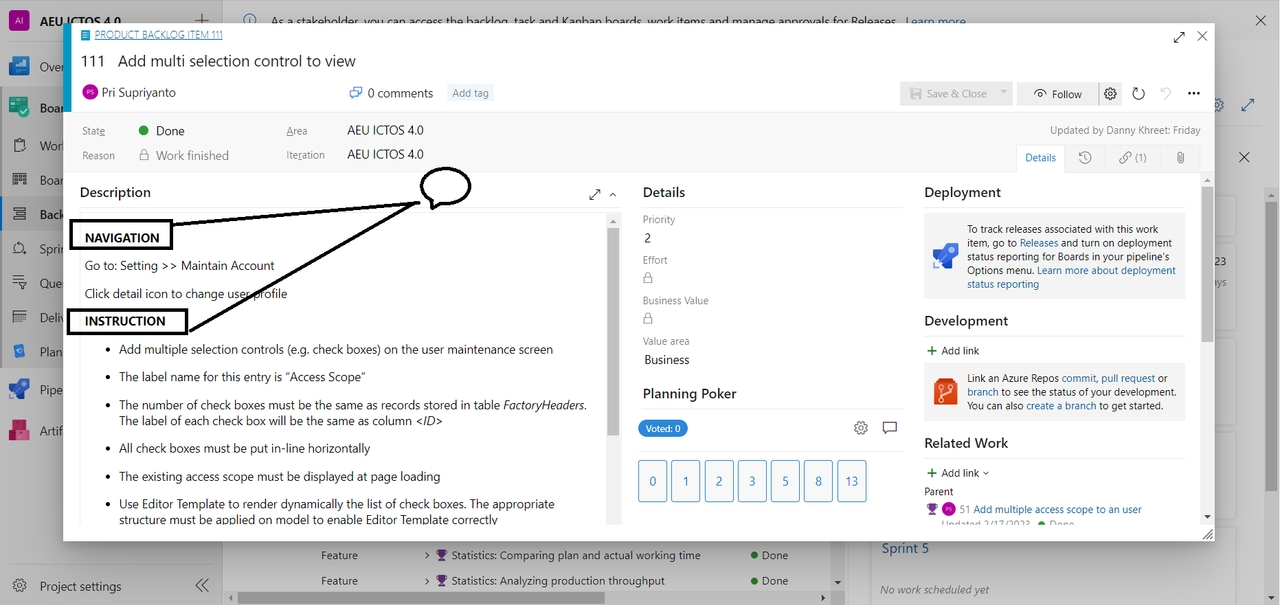Task Definition
Define a Task in Scrum

At the beginning of each sprint, the scrum team should define tasks, and each team member completes a portion of those tasks. Development, testing, and other types of work are examples of tasks. For instance, a tester may create tasks to write and execute test cases, and a developer might define tasks to implement PBIs (product backlog items). There are important description categories to define a task: 1. Navigation: This is showing how we can find the task in the product backlog.
2. Instruction: This is a description for the developer. What should he do to solve the task?
3. Acceptance criteria: Specific requirements that must be met in order for the task to be solved.
4. Data preparation: These are the steps to prepare the data for testing.
5. Testing scenario: Steps for testing the code.
6. Task prerequisite: Tasks to do before the instruction (main functions) tab.

Also, on the right panel, you can see some task information. For example, the person that is assigned to the task, labels - which group the task is categorized, sprint name, and story point for solving the task.
Last updated